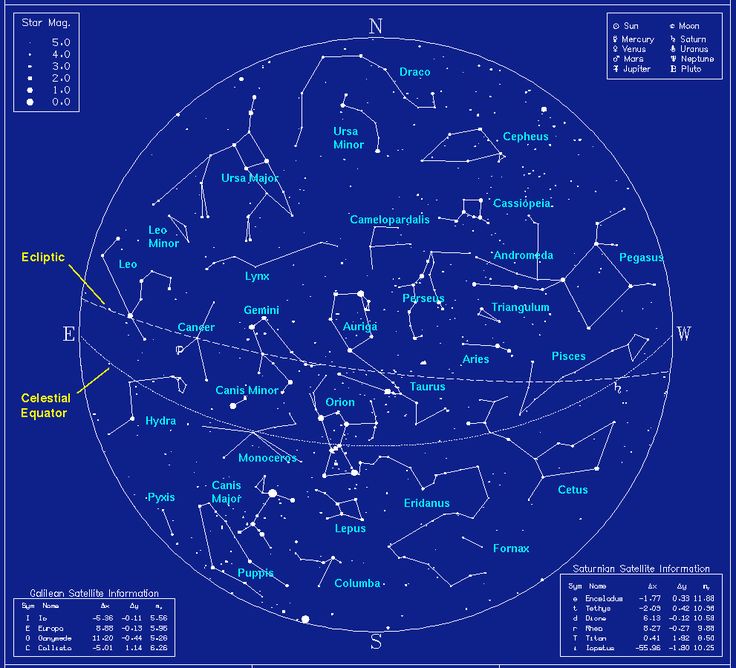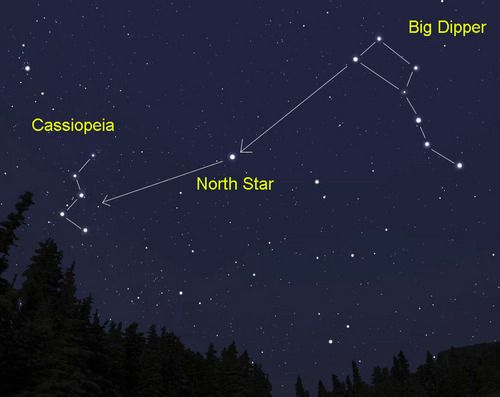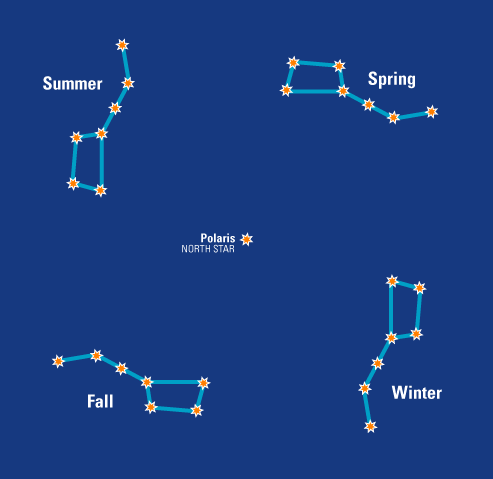
A Map of our Stars
Ursa Major
Ursa Major is one of the most recognizable constellations in the northern hemisphere and contains the well-known asterism, the Big Dipper.
Orion: The Hunter
Orion is a prominent winter constellation, known for the three stars that form his "belt." It also contains the Orion Nebula, a region of active star formation.
Casseopia: The Queen
Cassiopeia is a W-shaped constellation in the northern sky and is named after a queen from Greek mythology. It's visible year-round in most latitudes.

A Map of The North Star: Polaris
Fixed Position
Polaris is nearly stationary in the northern sky. It appears to be almost directly above the North Pole of the Earth. This fixed position makes it a reliable navigational aid, as it can be used to determine the direction of true north.
Close Alignment to Earth's Axis
Polaris is located approximately 430 light-years away from Earth. While it isn't the brightest star in the sky, its unique position near the celestial North Pole has made it a vital reference point for celestial navigation for centuries, especially for sailors and early explorers in the Northern Hemisphere.
How to Use Polaris
Locate Polaris, which remains nearly fixed near the North Celestial Pole. In the Northern Hemisphere, it appears due north. Determine your direction by measuring the angle between Polaris and the horizon, with Polaris above the horizon indicating true north.

How The Night Sky Rotates
Position Change
Our stars in the night sky don't actually rotate. They remain relatively fixed in space. However, their apparent position in the night sky changes as Earth orbits the Sun. In different seasons, they appear to shift in the sky due to our changing perspective.
Seasonal Arc
During the year, the Big Dipper follows a seasonal arc. In summer, it's high in the northern sky and easy to spot. In winter, it appears lower, closer to the northern horizon, as the Earth's tilt alters our view.
Circumpolar in High Latitudes
For observers at high latitudes, like the northern United States and Canada, the Big Dipper is circumpolar. This means it never sets and can be seen year-round, although its orientation varies with the seasons.
Related Article
- Secrets of the North Star
- The North Star, Polaris, is actually a part of a three star system. The closest star to Polaris was discovered in 2006 to have been hiding Polaris' bright light, 2000 times that of our Sun. When discovered using the NASA Hubble Space Telescope, the star was found to be only 2.4 Billion miles away from Polaris. This appears to be a large metric before you realize that the next closest star to our Sun is 4.2 light years away. This means that the closest star to Polaris is 1/1000th the distance of the next closest star to our Sun. Click the Link to learn more.